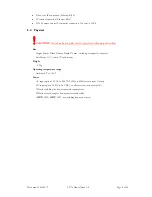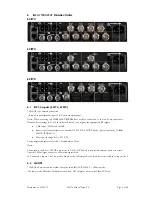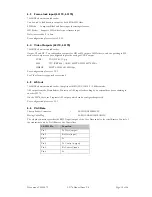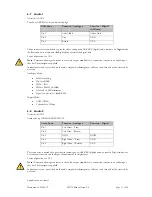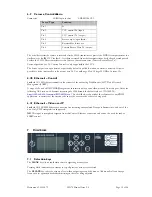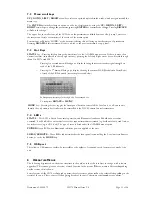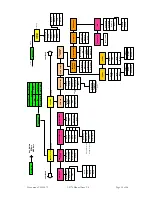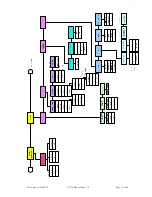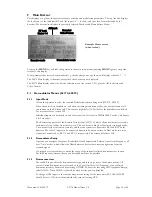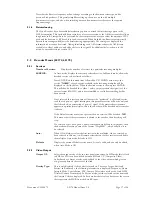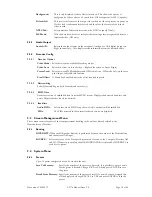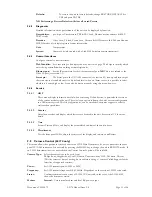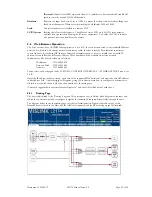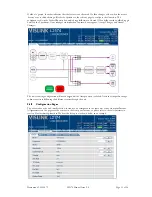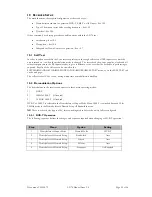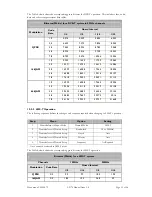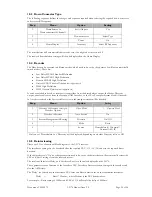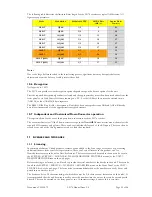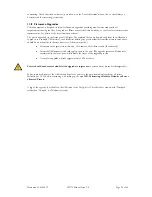
Document: CL140072
L2174 Manual Issue 2.0
Page 22 of 26
10
R
ECEIVER
S
ET
-
UP
The main functions that require configuration at the receiver are :-
•
Demodulation scheme in operation; DVB-T, LMS-T or ASI input – See 10.2
•
Type of down converter and operating frequency – See 10.3
•
Decoder – See 10.4
Other commonly used setup procedures and functions within the L2174 are :-
•
Interleaving –See 10.5
•
Decryption – See 10.6
•
Independent Down Convertor operation – See 10.7
10.1
Self Test
In order to enhance usability the Lynx receiver performs a thorough self test on all RF inputs every time the
unit is turned on, or when the modulation mode is changed. The tests check the power supplies, clocks and all
critical components in the RF input circuitry, to give confidence to the user that the hardware is performing as
expected. Results of the self test can be viewed in the
SYSTEM
Æ
DIAGNOSTICS
Æ
DEMODULATOR
Æ
MORE
Æ
SELF TEST menu, or on the SELF TEST tab
on the web page.
The self test takes 15-30s to run, during which time demodulation is disabled.
10.2
Demodulation Options
The demodulator in the receiver can operate in three main operating modes:-
1)
DVB-T
2)
10MHz LMS-T (if licensed)
3)
20 MHZ LMS-T (if licensed)
DVB-T or LMS-T is selected in the Demodulator
Æ
Input Mode Menu. LMS-T is switched between 10 &
20MHz mode in the Demodulator
Æ
Demod Setup
Æ
Bandwidth menu.
NB
There is a short delay (approx 10s) after switching modes before the unit is fully reconfigured.
10.2.1
DVB-T Operation
The following sequence defines the changes and sequence required when changing to DVB-T operation :-
Step
Menu
Option
Setting
1 Demodulator
Æ
Input Mode
Demod Mode
DVB-T
2 Demodulator
Æ
Demod Setup
Bandwidth
Auto
3 Demodulator
Æ
Demod Setup
Guard
Auto
4 Demodulator
Æ
Demod Setup
Polarity
Auto
5 Demodulator
Æ
Demod Setup
Frequency
As Required

